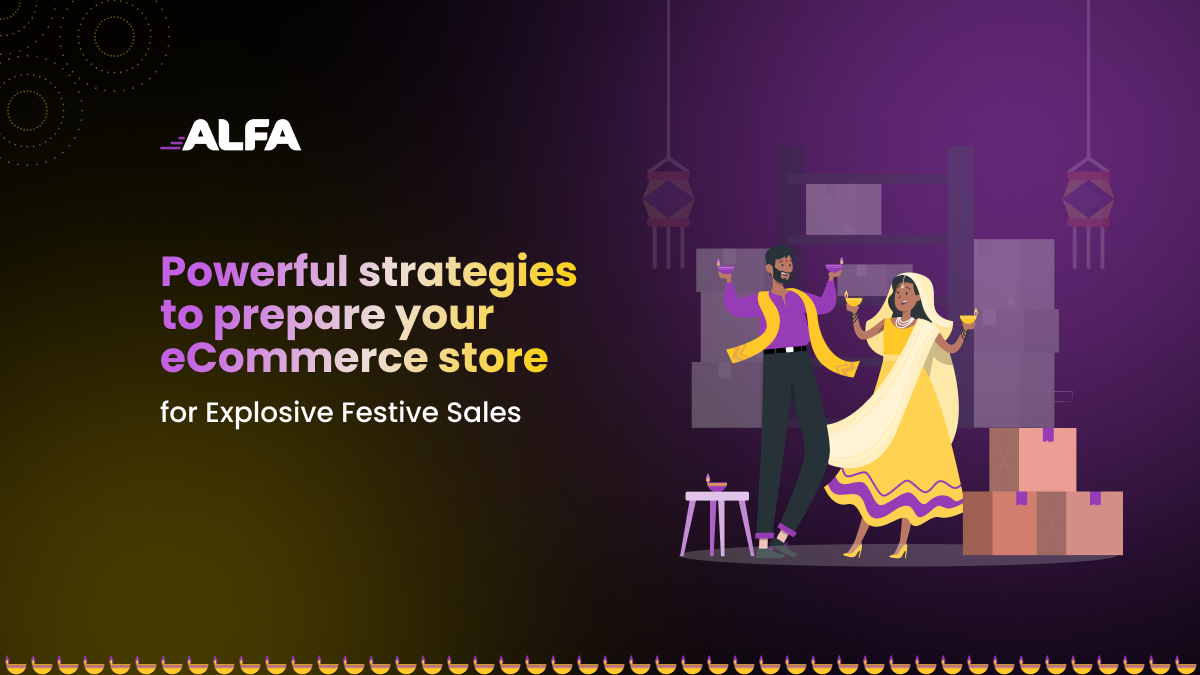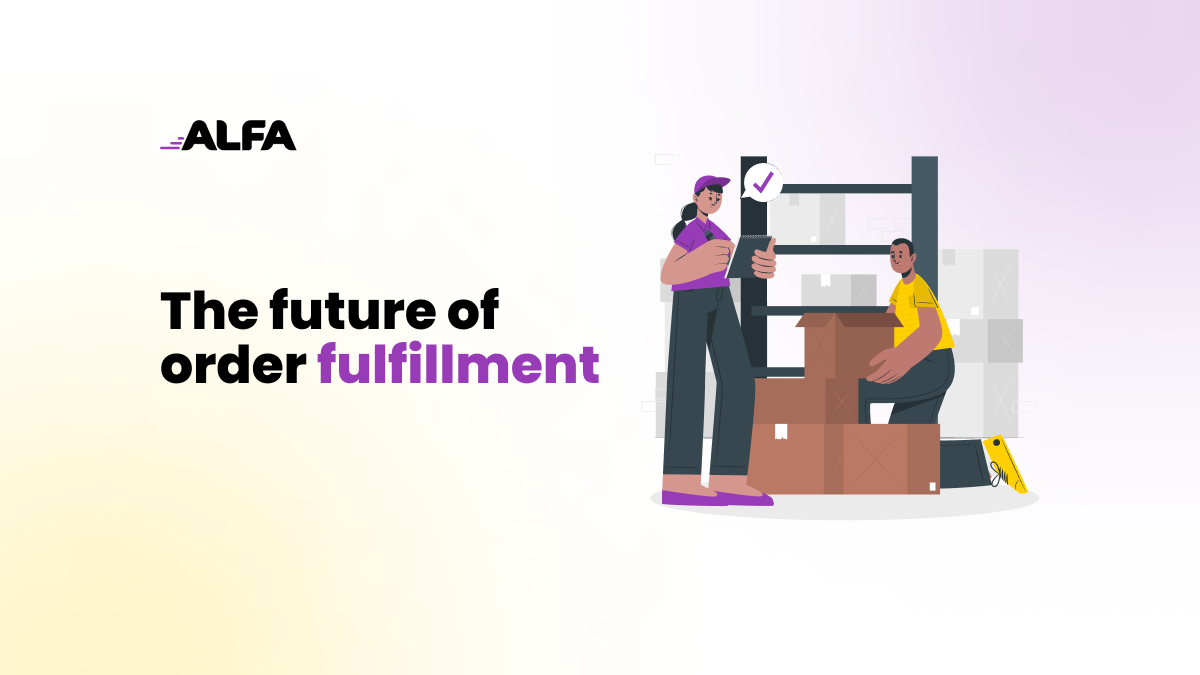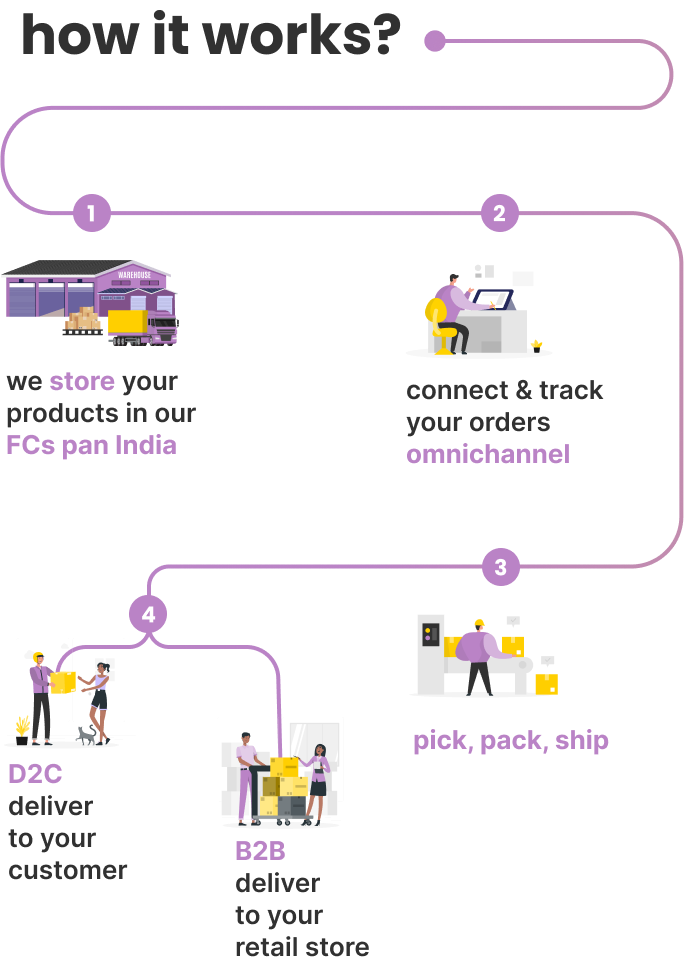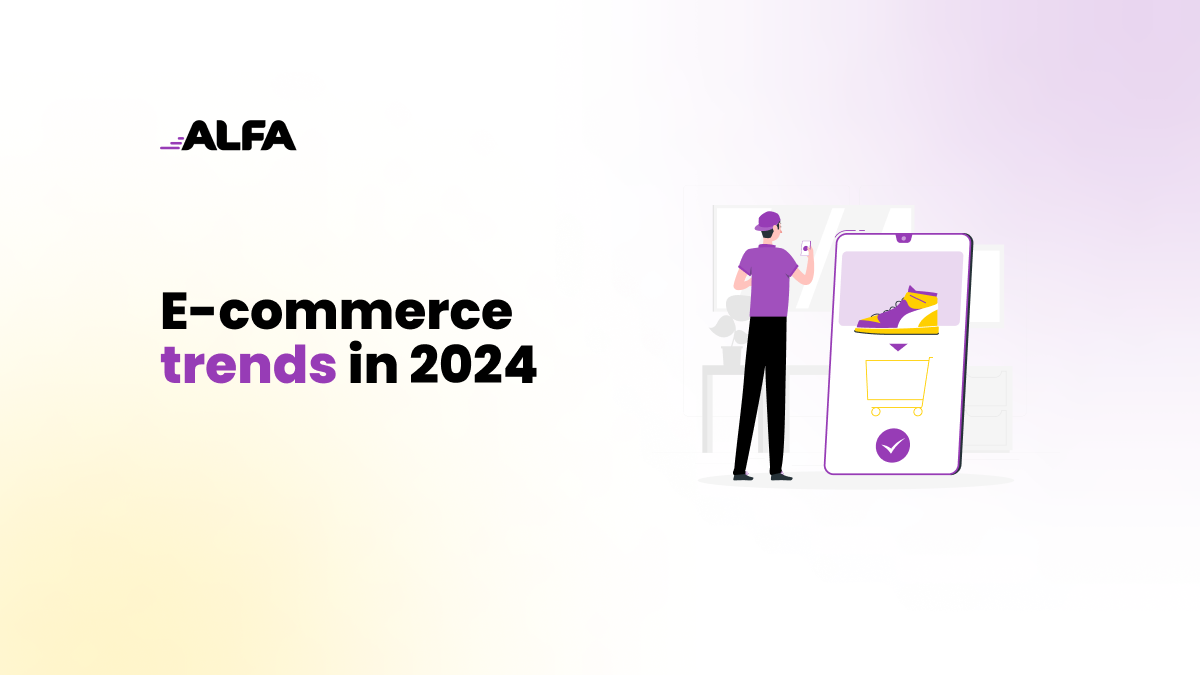The e-commerce industry is in a perpetual state of evolution. To stay competitive in the digital marketplace, it is important to stay on top of the latest trends followed by the top selling eCommerce brands. This article will help you identify the key eCommerce trends that your brand must leverage for high returns.
List of eCommerce Trends in 2024
- Cross-border Ecommerce
- D2C Commerce
- Green Commerce
- Quick Commerce
- Fast Delivery Options
- Voice Search
- Hybrid Commerce
- Omnichannel Strategies
- Social Commerce
- Blockchain For Supply Chain Transparency
1. Cross-border Ecommerce trend
Cross-border e-commerce involves the online buying and selling of goods and services between individuals or businesses located in different countries.
In 2024, cross-border e-commerce is poised to become an even more significant trend as businesses increasingly seek to expand their reach and access the lucrative global market. Key markets for cross-border e-commerce include the United States, China, and Europe. Recent research indicates that cross-border transactions are projected to surge by 107% by 2028.
Cross-border e-commerce represents a trend that is set to revolutionize how businesses operate in the coming years.
It is important to recognize that trading across borders presents challenges, including legal and compliance issues, currency conversion, logistics and shipping. However, with careful planning, these challenges can be overcome. Businesses must also consider the cultural nuances of their target markets and tailor their product and marketing strategies accordingly.
Alfa’s cross-border shipping services can help you seamlessly expand your presence in new markets and ensure you have a presence that reduces your shipping and delivery TATs for international shipping.
2. D2C Commerce
Direct-to-Consumer (D2C) commerce has invigorated the market in 2023, attracting significant investment across a wide array of D2C players. As we look ahead to 2024, the outlook for D2C in e-commerce is exceptionally bright. Digital Native Brands are not only expanding beyond their own websites but also venturing into e-commerce marketplaces and the quick commerce sector. With this broader reach and new sales platforms, the D2C ecosystem is poised to achieve remarkable milestones, particularly in the Beauty & Personal Care, Fashion, and Health & Wellness categories.
3. Green Commerce: Sustainability in Ecommerce
The Rise of Eco-Conscious Consumerism
Have you noticed how your favourite brands are adopting eco-friendly practices? This shift isn’t just a trend; it’s the future of shopping. With 88% of consumers wanting brands to help them make a difference, green commerce has evolved from a buzzword into a significant movement. Let’s explore some key aspects of this sustainable transformation:
Sustainable Packaging: A Bold New Era of eCommerce trends
Ever heard of ‘naked packaging’? No, it’s not the latest fashion trend—it’s about eliminating unnecessary packaging. Leading the charge is Lush Cosmetics, which sells many products without any packaging at all. This bold move not only benefits the planet but also resonates deeply with eco-conscious shoppers.
Another such eco-friendly brand is Thaely that makes shoes with fabric that looks and feels like leather but is made entirely out of waste plastic bags, without the use of any chemicals and are packed in plantable shoe boxes. With the sustainable packaging market expected to reach $440.3 billion by 2025, this trend is set to stay.
Learn more at Statista.
Carbon-Neutral Shipping: Delivering Without Guilt
Imagine shipping without the environmental guilt. Brands like Etsy are making this a reality by offsetting all carbon emissions from their shipping processes. This initiative isn’t just about being kind to Mother Earth; it’s about connecting with customers who care about sustainability. After all, who doesn’t appreciate a brand that’s committed to protecting the planet?
Ethically-Sourced Products: Setting the Standard
It’s not just about what you buy; it’s about where it comes from. Brands like Patagonia are setting the gold standard by ensuring their products are ethically made, respecting both the environment and the workers involved. Fair wages, safe working conditions, and eco-friendly practices are becoming non-negotiable for a growing number of consumers.
4. More Convenience with Quick Commerce
The tempo of modern life demands speed and efficiency, especially when it comes to online shopping. Quick commerce, or q-commerce, caters to this demand by emphasizing extremely fast delivery times, transforming the eCommerce landscape. Food and beverage brands are aggressively leveraging these platforms as they surpass in-store sales, which typically involve significant margins. In 2024, the primary challenge for platforms and brands in the quick commerce sector is to optimize performance, expand geographically, and closely monitor shopper needs at a detailed city level.
Businesses are innovating rapidly, with dark stores—retail distribution centers dedicated exclusively to handling online orders—emerging as key assets for facilitating same-day deliveries. These hubs are strategically positioned to reduce delivery times, ensuring customers receive their purchases within hours of ordering.
ALSO READ: 5 cost-effective ways for start-ups & entrepreneurs to prepare for quick commerce
Unlike traditional e-commerce models, D2C brands benefit from not needing extensive inventory tracking. However, they must remain vigilant about the competition within both traditional e-commerce and niche markets. For these brands, digital commerce intelligence focuses on identifying market gaps and developing data-driven strategies to capitalize on these opportunities.
5. Fast Delivery eCommerce trends
Customers expect their online purchases to arrive as soon as possible. Research suggests that 62% of online shoppers expect free shipping orders to arrive within three business days.
In addition to speed, free or affordable shipping is another eCommerce trend business owners should look out for. Consequently, business owners should strategize efficient shipping systems to meet online customers’ expectations.
Many supply chain management companies have set great examples for excellent fulfillment strategies. Alfa (an Apollo Supply Chain unit) is an emerging startup in India. It provides fast and flexible same day delivery and order fulfillment services for d2c and ecommerce brands by distributing its inventory warehouses pan-India to seamlessly cater to 18k+ pin codes from its 45 strategically located warehouses. Alfa also leverages its global warehouses to reduce your shipping TAT to 3 days for your international customers.
6. The Rise of Voice Search
Voice search is rapidly transforming eCommerce, changing how consumers interact with online platforms. As voice-enabled devices become more common, the ease of searching for products by simply speaking is gaining widespread popularity. Projections indicate that by 2024, global voice commerce sales will surpass $40 billion.
Furthermore, voice shopping reached to account for 5% of total online sales by 2022-23. As consumers increasingly rely on voice assistants like Alexa, Siri, and Google Assistant, it is crucial for businesses to optimize their eCommerce websites for voice search to remain competitive in the ever-evolving digital landscape.
7. Hybrid Commerce: Creating a Seamless Shopping Experience
Phygital, the blend of online and offline retail channels, is set to define how eCommerce companies will operate in 2024. This eCommerce model integrates multiple platforms and channels to create a seamless user experience, promoting omnichannel or hybrid selling.
One simple and effective method of omnichannel selling is click-and-collect, also known as buy-online-and-pick-up in-store (BOPIS). This service allows customers to purchase items online and then pick them up at a designated store or pickup location.
The popularity of click-and-collect has been steadily rising due to the convenience of online shopping, shorter in-store visits, and the benefit of free shipping. By 2025, the estimated value of this trend will surpass $154 billion. Major retailers already offer this service, highlighting its growing importance in the retail landscape.
8. Embracing Omnichannel Revolution
The landscape of eCommerce is evolving towards “phygital,” seamlessly blending online channels with physical retail experiences. This forward-thinking eCommerce model integrates various channels and platforms, fostering hybrid commerce or omnichannel selling eCommerce trends.
The major difference between Hybrid commerce and Omnichannel is, “omnichannel means that all customer touchpoints are integrated while hybrid only integrates online and offline touchpoints.
Mobile shopping is Booming
Mobile shopping is not just growing; it’s skyrocketing. Did you know it’s projected to reach an astounding $2.2 trillion globally by 2023?
That’s a tremendous amount of shopping carts! In today’s digital age, offering a seamless shopping experience across devices is no longer optional; it’s essential. The businesses that understand this are the ones leading the pack.
Mobile App Optimization
Admit it or not, our phones have become extensions of our arms. With 60% of e-commerce sales generated via mobile devices in 2023, businesses must ensure their apps are top-notch.
Smooth shopping experience, quick load time, and easy checkouts? Yes, please!
Online Marketplace Optimization
Have you ever noticed the surge of brands appearing on platforms like Amazon and eBay? That’s because having a presence on these platforms can significantly boost your brand’s visibility and sales while helping you reduce costs arising from traditional business models requiring physical stores and assets.
Having a presence on Amazon for example, will help your brand leverage the power of AI which is crafted to deliver a personalized shopping experience for your customers while creating value-based bundles for Amazon’s Prime members. They leverage AI for personalized shopping experiences and entice customers with perks through Amazon Prime.
9. The Rise of Social Commerce
Social media has proven to be a powerful retail sales channel, especially for mobile shopping. Studies indicate that 80% of social media traffic comes from mobile devices, and a significant 79% of smartphone users have made purchases through their phones.
Currently a multibillion-dollar industry, social media commerce sales are projected to triple by 2025, reaching an impressive $1.2 trillion. The number of global social network users, which surpassed four billion in 2021, is expected to approach six billion by 2027.
Growth with Social Media Leveraging eCommerce Trends
eCommerce businesses should capitalize on this trend, as 75% of social media users rely on these platforms to research products. Facebook leads the pack with approximately 2.9 billion users worldwide.
Built-In Tools and Cost-Effective Strategies
With built-in eCommerce features Instagram Shopping, Facebook Shops, and Pinterest’s shoppable ads, business owners can easily launch campaigns to engage potential customers. These social commerce landscapes in 2024 look set to offer an even more cohesive and direct pathway from product discovery to purchase.
Selling through social media channels is a cost-effective strategy, especially for new eCommerce stores. To further boost sales, businesses can incorporate influencer marketing and live shopping into their strategies.
The Power of Influencer Marketing
Influencer marketing is an effective way to drive organic traffic and attract new customers at a lower cost. It generates a return of $5.78 for every dollar spent. Additionally, 60% of marketers report that influencer-generated content achieves higher engagement and performs better than branded posts. A notable 80% of consumers have made purchases based on influencer recommendations.
The Rise of Live Online Shopping
Live online shopping is emerging as one of the most promising eCommerce trends, with an estimated market value of $55 billion by 2026. Livestream shopping is poised to significantly transform the future of eCommerce.
According to reports, Fashion leads as the most showcased product category in live commerce, followed closely by beauty products.
10. Blockchain For Supply Chain Transparency
The rise of blockchain technology as one of a dominant eCommerce trends in supply chain management significantly boosts transparency and security. Its decentralized ledger system ensures that all transactions are transparent and immutable, effectively preventing tampering.
Blockchain technology allows for real-time tracking from production to delivery, helping to mitigate risks such as fraud, theft, and counterfeiting. Consequently, businesses are increasingly adopting blockchain to build trust with consumers and partners.
Conclusion
Start-ups or SMEs can adopt these trends to streamline their business operations and stay ahead of the curve.





